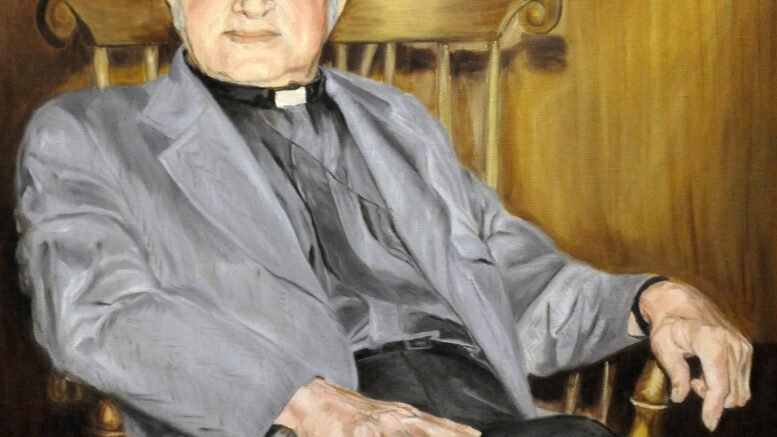The donation of artwork by the late Gertrude and Robert Gauss of Sayre to the Sayre Historical Society is the featured subject of the Winter issue of the Quarterly history magazine. A variety of stories, including a look back at the 1918 Spanish Flu Epidemic, the first run of the John Wilkes express train in 1939 and Valley Record founder Joseph Murrelle, are included in the latest issue of the Quarterly.
The local history magazine is mailed to all members as part of their membership benefits four times a year. Individual copies are available by calling the museum at (570) 882-8221 or by email to sayrehistorial@yahoo.com.
Rev. Albert Greene was rector of the Redeemer Episcopal Church in Sayre for 23 years. He was one of the officiating clergymen at the funeral of Dr. Donald Guthrie. A winter scene showing a snow-covered barn and creek done by the late Mrs. Gauss is also included in the article. Mr. Gauss, who passed away in 2005, was also an accomplished artist. One of his paintings titled “Clowns” is reproduced in the Quarterly.
According to the June 2, 1954 Sayre Evening Times, the Sayre couple had collaborated on their artwork for several years.
“Mrs. Gauss started first, having had both a mother and grandmother with artistic bents, and an oil set of her own when only eight or nine years old,” stated the article. “Mr. Gauss began with pencil sketching and was gradually drawn into painting with oils about three years ago.”
An exhibit of selected paintings by Mr. and Mrs. Gauss is planned for the spring of 2021 in the museum.
The late Beryl Cleary, former staff nurse and nursing instructor at the Robert Packer Hospital did another article in the Winter Quarterly in 1995. She outlines the history of the infamous Spanish Flu Epidemic, which came in three waves over a period of twelve months in 1918-19.
“The State Health Department warned that should the disease became unduly prevalent in the community all places where person congregate in numbers should be closed,” stated Mrs. Cleary. “The Towanda Board of Health closed all public places of amusement, all churches, public and private schools, and Sunday schools. Also closed were theaters, picture shows, saloons, poolrooms and dance halls until further notice. Sayre did the same.”
On Sunday, May 28, 1939, the newly christened John Wilkes Express Train, streamlined in the Sayre Shops with all the latest in travel comforts, was opened for inspection in Sayre.
“Through the eight remodeled cars, sparkling with the latest in decorating ideas from thistle paint to air conditioning, a steady stream of Valley residents filed, and a platform had been constructed so those who wished could get a close-up view of the engineer’s cab in the snub-nosed locomotive that rivals the most modern streamlined engines on the rails today,” stated the May 29, 1939 Sayre Evening Times. Two photographs of the historic occasion from the Joseph Mullen Collection are included with the article.
Another of the articles looks back at the life of a Sayre man who served as Bradford County treasurer in the 1930’s and was a veteran newspaperman for many years. Joseph H. Murrelle was born in Georgia but moved to Pennsylvania when he was 11. He was founder of the Valley Record newspaper, which was published between 1905 and 1907. The Murrelle family had previously donated several bound volumes of the newspaper to the Sayre Historical Society and the museum association, under volunteer James Nobles, is in the process of digitizing the volumes to share with the public.
The final story details efforts in the early 1900’s to drain two ponds in Sayre outlined in a letter from Valley surveyor Nathaniel F. Walker. In the 1904 letter to William T. Goodnow, president of the Sayre Land Company, Walker explains how the ponds might be drained. Two historic photographs in the Quarterly show views of the “Packer Pond.”
The Sayre Historical Society is a non-profit historic preservation organization staffed entirely by volunteers. The membership-supported organization receives funding from the United Way of Bradford County and the Bradford County Tourism Promotion Agency.



Be the first to comment on "Gauss paintings featured in Winter Quarterly"